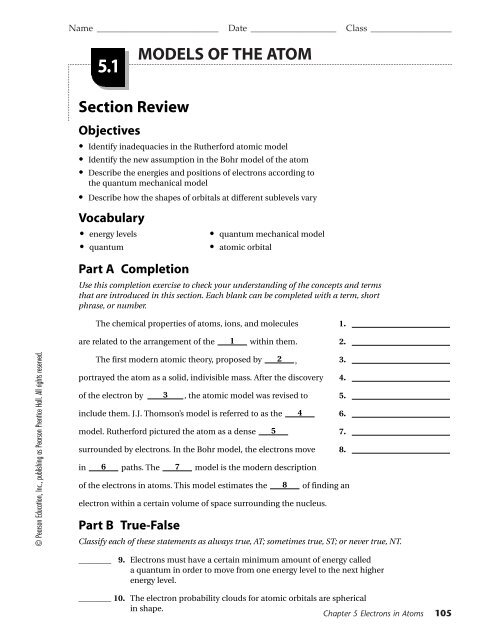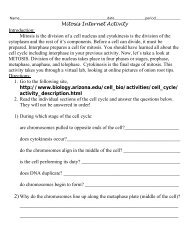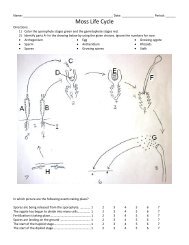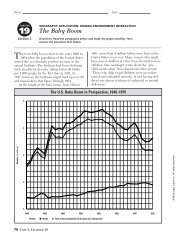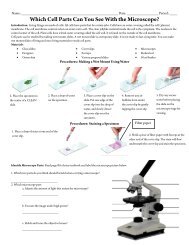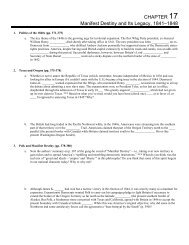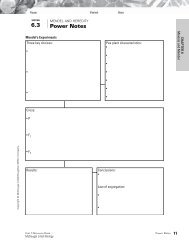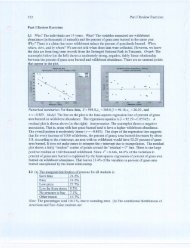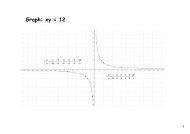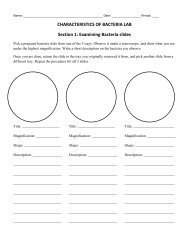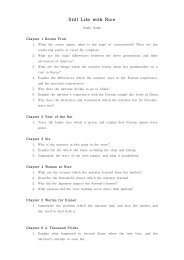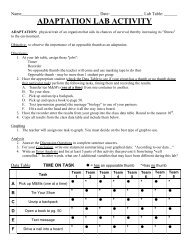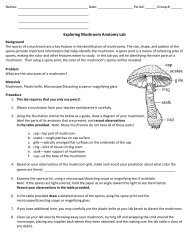MODELS OF THE ATOM
MODELS OF THE ATOM
MODELS OF THE ATOM
Create successful ePaper yourself
Turn your PDF publications into a flip-book with our unique Google optimized e-Paper software.
© Pearson Education, Inc., publishing as Pearson Prentice Hall. All rights reserved.<br />
Name ___________________________ Date ___________________ Class __________________<br />
5.1<br />
Section Review<br />
<strong>MODELS</strong> <strong>OF</strong> <strong>THE</strong> <strong>ATOM</strong><br />
Objectives<br />
• Identify inadequacies in the Rutherford atomic model<br />
• Identify the new assumption in the Bohr model of the atom<br />
• Describe the energies and positions of electrons according to<br />
the quantum mechanical model<br />
• Describe how the shapes of orbitals at different sublevels vary<br />
Vocabulary<br />
• energy levels<br />
• quantum<br />
Part A Completion<br />
Use this completion exercise to check your understanding of the concepts and terms<br />
that are introduced in this section. Each blank can be completed with a term, short<br />
phrase, or number.<br />
The chemical properties of atoms, ions, and molecules 1.<br />
are related to the arrangement of the 1 within them. 2.<br />
The first modern atomic theory, proposed by 2 , 3.<br />
portrayed the atom as a solid, indivisible mass. After the discovery 4.<br />
of the electron by 3 , the atomic model was revised to 5.<br />
include them. J.J. Thomson’s model is referred to as the 4<br />
6.<br />
model. Rutherford pictured the atom as a dense 5<br />
7.<br />
surrounded by electrons. In the Bohr model, the electrons move 8.<br />
in 6 paths. The 7 model is the modern description<br />
of the electrons in atoms. This model estimates the 8 of finding an<br />
electron within a certain volume of space surrounding the nucleus.<br />
Part B True-False<br />
• quantum mechanical model<br />
• atomic orbital<br />
Classify each of these statements as always true, AT; sometimes true, ST; or never true, NT.<br />
________ 9. Electrons must have a certain minimum amount of energy called<br />
a quantum in order to move from one energy level to the next higher<br />
energy level.<br />
________ 10. The electron probability clouds for atomic orbitals are spherical<br />
in shape.<br />
Chapter 5 Electrons in Atoms 105
Name ________________________________________ Class _________________ Date _______________<br />
________ 11. The number of sublevels in an energy level is equal to the square of<br />
the principal quantum number of that energy level.<br />
________ 12. The maximum number of electrons that can occupy the fourth<br />
principal energy level of an atom is 32.<br />
________ 13. The higher the energy level occupied by an electron the more<br />
energetic it is.<br />
________ 14. The principal quantum number equals the number of sublevels within<br />
that principal energy level.<br />
Part C Matching<br />
Match each description in Column B to the correct term in Column A.<br />
Part D Questions and Problems<br />
Answer the following in the space provided.<br />
19. Summarize the development of atomic theory.<br />
20. How many orbitals are in each of the following sublevels?<br />
a. 4p sublevel<br />
b. 3d sublevel<br />
c. 4f sublevel<br />
d. 2s sublevel<br />
Column A<br />
________ 15. quantum<br />
________ 16. atomic orbitals<br />
________ 17. energy level<br />
________ 18. quantum mechanical<br />
model<br />
106 Core Teaching Resources<br />
Column B<br />
a. a region in space around the nucleus of an atom<br />
where an electron is likely to be moving<br />
b. the regions around the nucleus within which the<br />
electrons have the highest probability of being<br />
found<br />
c. the amount of energy required to move an electron<br />
from its present energy level to the next higher one<br />
d. the modern description of the behavior of electrons<br />
in atoms<br />
Prentice Hall, Inc. All rights reserved.


